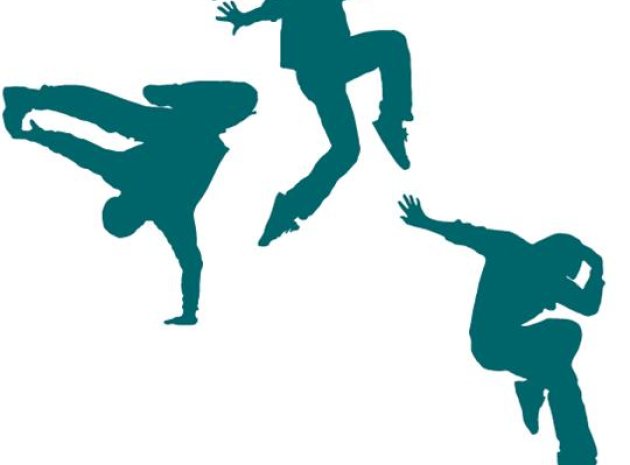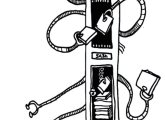It’s a curious dichotomy we live with when it comes to the notion of performance, I think. On the one hand it feels like every other young person you come across is all set to win the X Factor and become the Next Big Thing – and on the other, we’re brought up being told that no-one really likes a show off. Talk about mixed messages; where does this leave us with our attitude to performing within the school environment?
I’m also intrigued as to how one word can have multiple meanings, many contradictory. ‘Performance’ refers to a tiresome procedure one day and something worthy of applause the next; with all the definitions coming from a root which simply means ‘to do’, but is much more loaded than that in pretty much any context.
Despite the breadth of meaning, when we talk about ‘performance’ within an educational setting, we tend to mean the Performing Arts students putting on a show. If it’s in any other context, it’s an add-on, a mostly unwelcome extra effort for staff and a distraction for pupils who should be concentrating on their ‘proper’ work. But does it need to be that way?
Deeper understanding
If we go back to the root meaning, ‘to carry out or do’ – then should not the opportunity to be able to show your peers and teachers an example of your mastery of a certain thing, be a useful tool to raise confidence and increase motivation?
Where I believe performance is at its most powerful, its most useful, is when it is used as a way in to a much deeper engagement – and surely engagement is what we’re all after? If we consider how much understanding it takes to have to read a thing, versus how much understanding it takes to have to perform a thing, that’s justification enough for the inclusion of performance in any subject. Moreover, when handled correctly, making space for performance in the classroom actually means the teacher doing less, rather than more, work.
Many of the greatest leaps in progress I’ve seen in young people come when they start to understand their role in the classroom, and in the learning process – that they are not just passive recipients of knowledge delivery, but that they have an active responsibility to themselves as well as the wider setting. Performance can play a key role in helping children understand the whole dynamic of the classroom, and to make a greater contribution to it.
Of course there is almost no better way to test how well you know something than to try to teach it to somebody else, and I remember using this premise in a Year 9 English class. I split the students into groups, and each had to decide which element of the study text they were going to teach; how; and who in the group was going to do what. It was a short, rapid fire kind of a task and the energy was high – particularly from one boy, who always tended towards disruptive and attention seeking behaviour. It was no surprise to see that when it was his turn to ‘be teacher’, he approached the front of the room full of cocky swagger – however, when he turned to the class and actually had to face them and perform, his demeanour changed completely. There was a visible shift in his understanding of what that task entailed, of how hard it was. You could see him realising that just showing off wouldn’t cut it here; he had to perform, properly, and he was completely thrown off guard. But not forever – and the sea change in that child affected the whole class positively.
Real inclusion
Performance doesn’t have to be just the domain of drama and English faculties though. I’ve had a great deal of success in progressing disengaged students in many other subjects using performance. In a Year 11 chemistry class, for example, I saw how much more interested the students became when they were involved in a practical experiment, but that there were limited opportunities for that involvement. So we set up a group of commentators and a panel of ‘pundits’ and treated the whole thing like Match of the Day, with the microphone wielding commentators describing every action the (almost silent) teacher made in conducting the experiment, whilst the panel discussed what might happen next and why.
It doesn’t even have to be ‘live action’. In an age where young people are completely at home with recording their lives on camera, whether still or moving pictures, those who are perhaps a little less comfortable with getting up in front of others in real life, can glean the same benefits that performance brings, via a screen.
In a more conventional use of performance, my company, changing cultures, worked with a large SEN school delivering many aspects of their curriculum through the creation and performance of an original stage show, involving as many of the pupils as possible. Some of these young people had serious emotional, behavioural and mental health challenges, and for them, the thought of being on a stage was too overwhelming. So we went to them, and made short sections of film that were then incorporated into the performance. The expressions on the faces of those young people when they saw themselves on the screen, in front of an appreciative audience, in a professional theatre, showed what a massive impact that experience had on them.
That impact can happen in the classroom too. Working with a Year 7 history class to produce a news item around the murder mystery of Julius Caesar – with eye-witness accounts from plebians, senators, and soldiers amongst others – it was the most chaotic girl in the class who came to the fore to organise the structure of the piece; it was the least keen writers who prepared the scripts; and it was the shyest children who suddenly had the most to say. In addition, the respect they showed each other during the process of creating the performance stayed with them for this, and future debates, around the events of history. . . and it’ll come in handy when they get onto Shakespeare!
We live at a time when like never before, young people are experiencing almost everything as a performance – recorded, shared, liked or disliked. It’s never been more true that, “all the world’s a stage” nor that “everyone’s a critic”. So apart from anything else, we owe it to our children to be well prepared for the unarguable real world applications of performance.
So then – performance is a tool that increases engagement, understanding and attainment; that develops the soft skills employers say they want, like communication, collaboration, organisation and decision making; that grows confidence; and that takes the workload off the teacher and puts it onto the students? Clearly, you’d be mad not to use it – so why not have a go? Just remember to clap nice and loud…
In the spotlight
- Remember it doesn’t have to be a big deal, just the opportunity for a young person to present a piece of work to the rest of the class will have an impact.
- Don’t shy away from using performance if you have weak students in your class – asking them to teach five minutes of the lesson, alone or with another, can really help build confidence.
- Performance can be used in any subject – why not ask your science students to make a health and safety video?
- Use existing TV show formats – The Culture Show for Art; Top Gear for Design and Technology; even Take Me Out for Roman Gods and Goddesses. The students will probably have loads of ideas themselves, too.
- When your students achieve something they’re really proud of, why not ask them to present it in an assembly, or even to Governors?
About the author
Nikky Smedley is director of changing cultures (changingcultures.org) – a company of four creative professionals who work to find innovative solutions for a myriad of challenges in education; commerce; and the cultural sector – through facilitation, training, mentoring, and consultancy.










